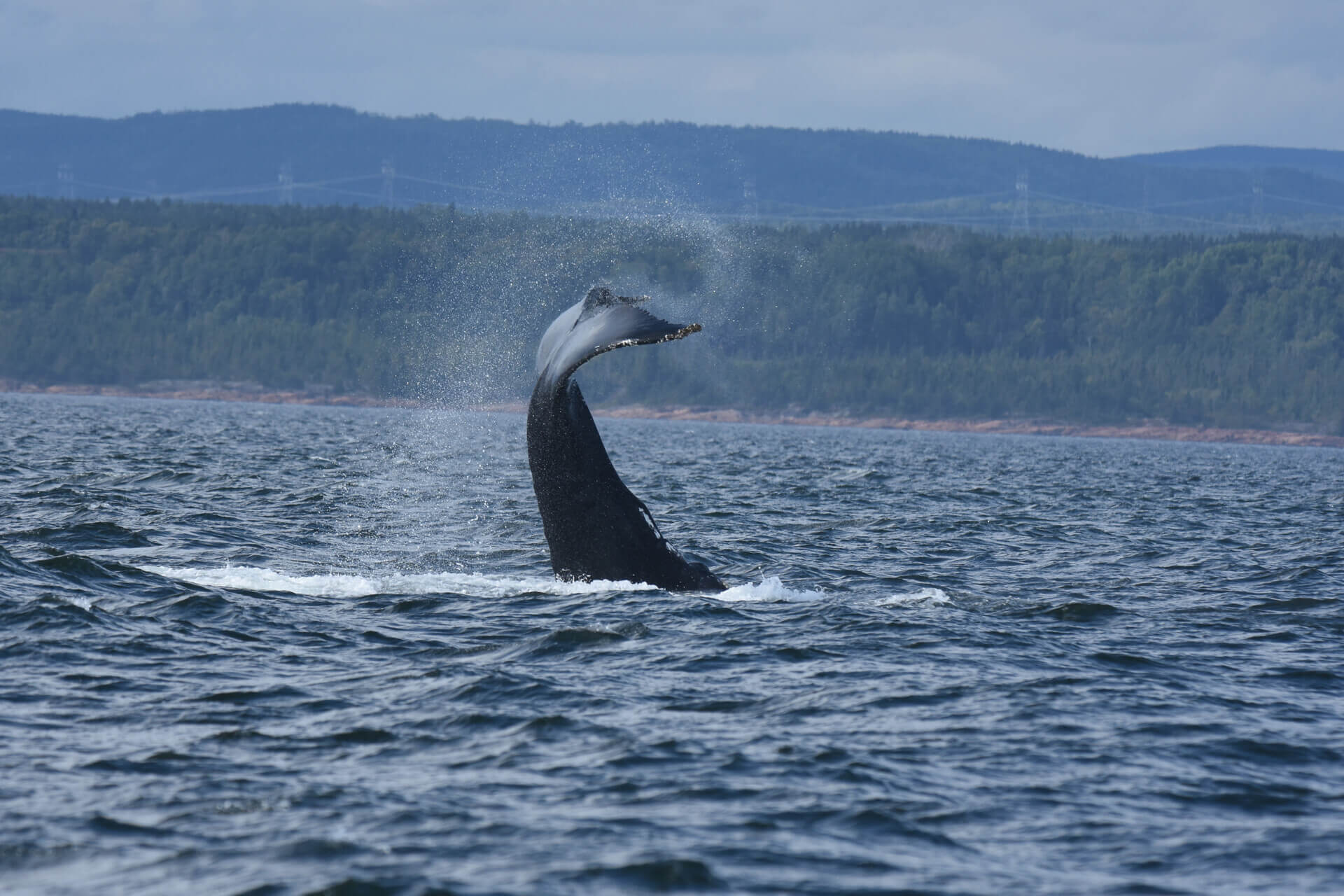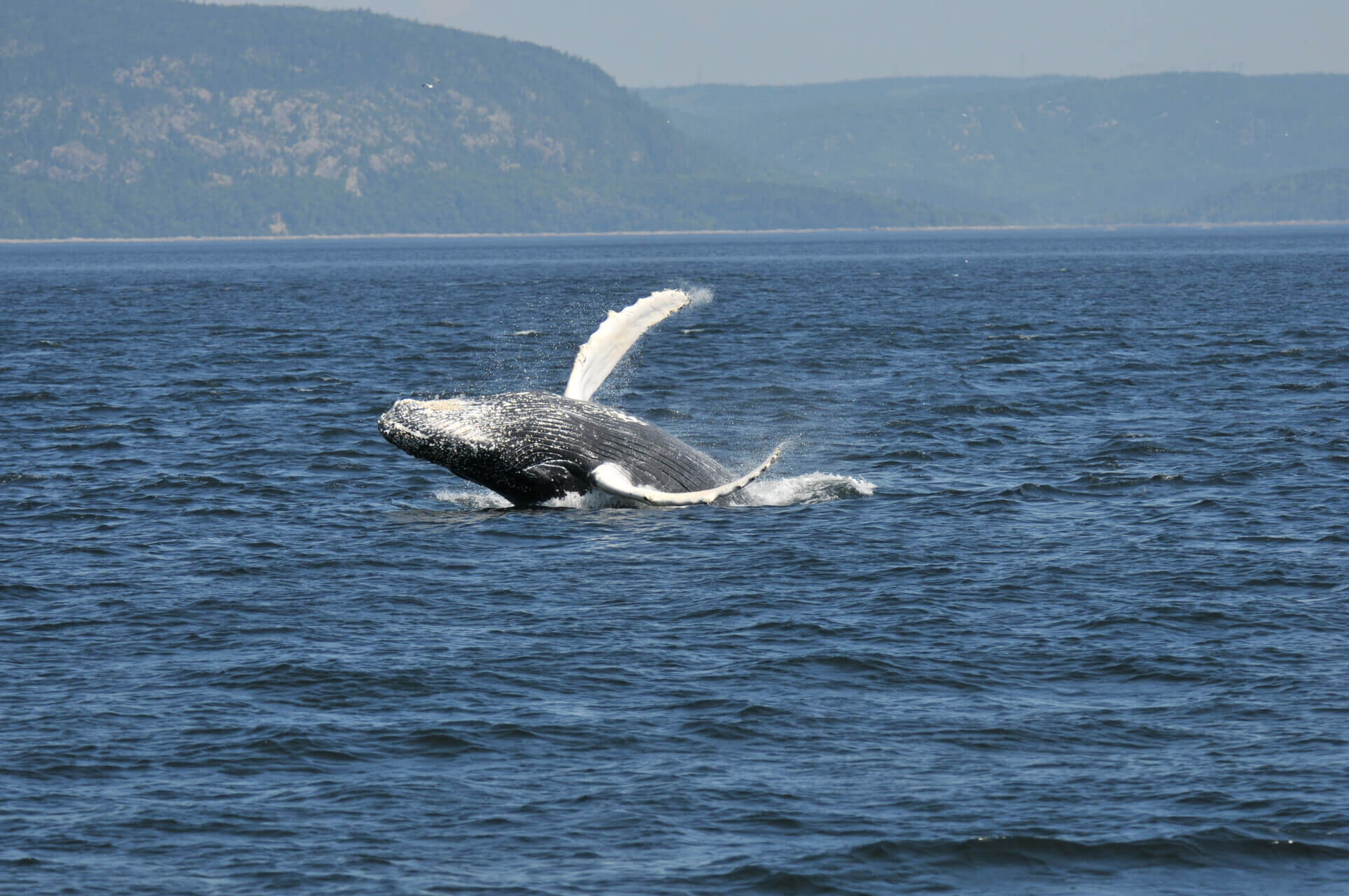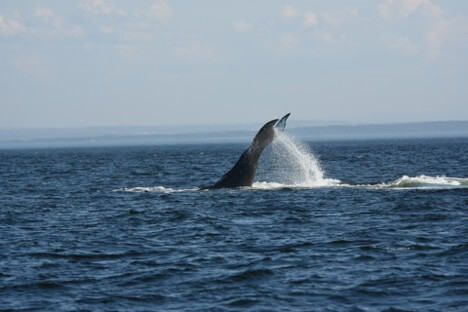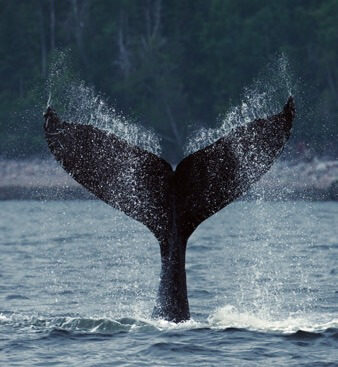Humpback whales are also particularly entertaining, lifting their tails when diving, performing successive breaches, striking their pectorals or tail on the water surface, etc. Their exuberant behaviours are as varied as they are fascinating, but above all mysterious. What do all these feats mean and what purpose do they serve? Let’s look at a few of the reasons behind some of these intriguing power shows.
Communicating with sound
The collision between the water surface and the animal’s body produces sounds that can be heard over varying distances. This is why the scientific community agrees that these sounds are part of a particularly broad repertoire of noises used for communication between individuals. Whales can communicate both verbally (thanks to their wide vocal spectrum) and non-verbally (thanks to their behaviour and the sounds they can produce), a bit like humans and many other animals.
While verbal sounds have been studied extensively, those produced by the whales’ surface activity are still enigmatic. However, the behavioural repertoire of humpbacks plays an important role in understanding social interactions between individuals. Amongst other things, these sounds might allow dispersed groups to stay in contact and locate each other, as well as individuals within the same group to communicate.
During the cetacean breeding season, male displays such as slapping the water surface with the pectoral fins and tail or breaching generally represent a show of strength to seduce females or ward off potential competitors. The animals can show considerable violence during these displays, with males squaring off and inflicting serious injuries. Notwithstanding this well-known fact, let’s take a closer look at the purpose of specific types of humpback whale behaviour.
Tail slapping
The whale stands vertically, head down, and raises its peduncle out of the water to repeatedly strike the shimmering surface with its tail, from top to bottom. Producing a deafening splash that can be heard for hundreds of metres,
this behaviour is most frequently observed just before individuals form groups or these groups split up. The noise it generates seems to help facilitate or control these interactions.
According to one hypothesis, tail slapping might also be an antagonistic behaviour adopted during interactions between competing groups. For example, when several males compete for the favours of a female, tail swipes may even be used to strike their rivals.
However, females and calves have also been observed slapping the water surface with their tails while no males were in the vicinity. This behaviour could therefore also be a kind of game for young animals imitating their elders or simply having fun in the choppy waters.
One last very surprising – and yet highly probable – hypothesis exists to justify these antics: it could be a feeding technique! Indeed, the thunderous noises produced by the whale’s tail are believed to frighten nearby prey. Tiny crustaceans may therefore congregate in tighter groups, making it easier for their predator to engulf large, calorie-rich mouthfuls of prey.
Peduncle throw
This feat is mainly performed during the breeding season. The male turns on his side and propels his lower body into the air before letting it fall violently back into the water. This is one of the most aggressive displays of force that humpbacks can demonstrate. It is said to be observed during interactions between rival groups or individuals, particularly for the attention of females.
Tail sailing
Offshore, a whale tail pokes above the water surface, where it stands motionless for minutes on end. No need to panic! This is a behaviour called tail sailing, a posture that, though rarely observed, is not abnormal.
This behaviour is often seen in females accompanied by their calves. It can last anywhere from a few minutes to several hours. Some scientists have even reported observing a whale remain motionless in this position for as long as ten hours!
The scientific community is still unsure how to explain this behaviour, though several theories have been put forward. According to Ed Lyman, protected resources specialist for the Hawaiian Islands Humpback Whale National Marine Sanctuary, this behaviour is certainly related to parental care. According to Lyman, it is highly likely that this strange position can be explained by one or a combination of three theories.
The first hypothesis is that this position would allow the mother to rest while monitoring her calf from the corner of her eye. It is also possible that the mother is more easily able to feed her calf while she is positioned vertically in the water. This position would place the adult’s mammary glands in the perfect position to eject milk into the calf’s mouth. Lastly, this unusual posture could also be a thermoregulation technique. A wet caudal fin sticking up above the water surface on a breezy day might help the whale stay cool, a bit like the sweat on our skin during a heatwave.
Given that these three explanations are not mutually exclusive, it would not be surprising if the female humpback benefits from all three techniques simultaneously when standing vertically in the water.
A clearer understanding in the future
It is difficult to ascertain the functions of these various behaviours with confidence. Their functions vary depending on the groups involved, the animals’ age and sex, the distance between them, the context of the interactions and their environment. However, these studies contribute to a more detailed understanding of the social behaviour of these spectacular giants.









